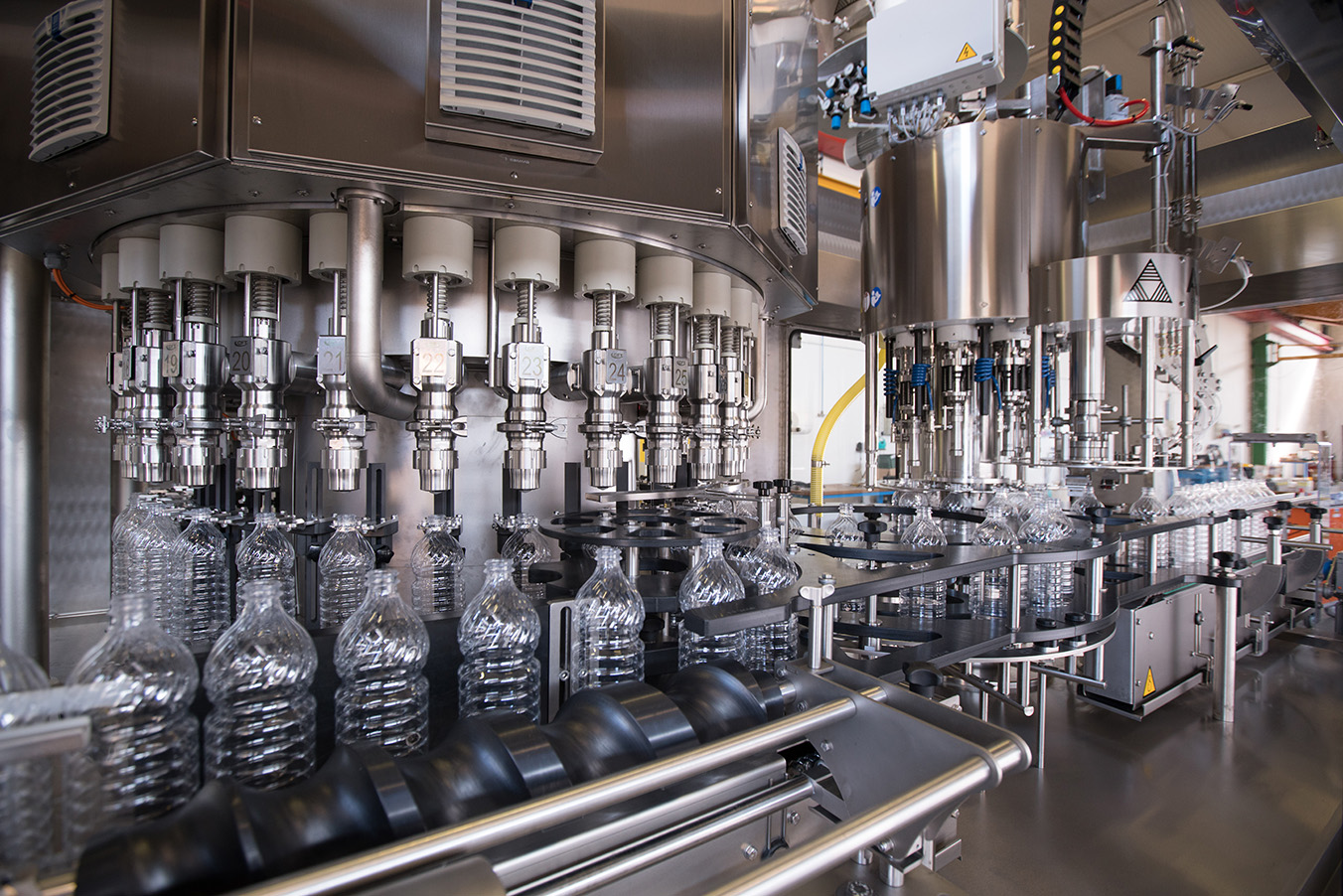
Types of filling machines
Filling machines are essential in the food, beverage, and non-food industries, ensuring that products are packaged efficiently, accurately, and hygienically. The choice of filling machine technology affects not only the final product quality but also production speed, changeover flexibility, and operating costs. Each technology has unique features that make it suitable for specific product types, container formats, and production environments.
From still beverages to viscous sauces, from carbonated drinks to oils, choosing the right liquid filling machine is key to ensuring efficiency, minimizing waste, and maintaining consistent quality.
In this guide, we’ll explore two complementary aspects:
- Filling technologies – flowmeter, level, weight (load cell), and volumetric filling – defined by the physical or technical principle used to dose the product into the container;
- Types of filling machines, classified according to their mechanical configuration or layout (i.e., how the machine handles containers and the filling cycle), regardless of the dosing principle adopted.
For each technology and type of food filling machine, we’ll highlight how it works, its strengths, and its ideal applications. Understanding these differences is crucial to selecting the best solution for any production line—whether you prioritize absolute precision, maximum speed, or operational flexibility.
Filling Technologies
Flow meter filling
Flow meter filling technology relies on magnetic flow meters to measure the exact product volume dispensed into the container. Most systems use either electromagnetic or mass flow meters, which deliver a high level of precision, minimize waste, and ensure consistent, uniform filling.
One of the main strengths of this technology is its flexibility. Flow meter fillers can handle a wide variety of products, from carbonated to still beverages, as well as liquids with both high and low viscosity. Product changeovers are fast, making them ideal for production lines with frequent format changes. This versatility also extends to different container types, including glass bottles and jars, PET, PE and HDPE bottles, aluminum cans, and more.
Hygiene is another important advantage. The streamlined design of flow meter systems minimizes contamination risks and simplifies cleaning operations, an essential factor for sensitive products such as dairy-based drinks or fruit juices.
From a performance standpoint, flow meter fillers combine high precision with high-speed operation, making them suitable for large-scale industrial environments. They are the ideal choice when the goal is not to fill to a visual level but to deliver the exact required volume into each container, regardless of its shape or transparency.
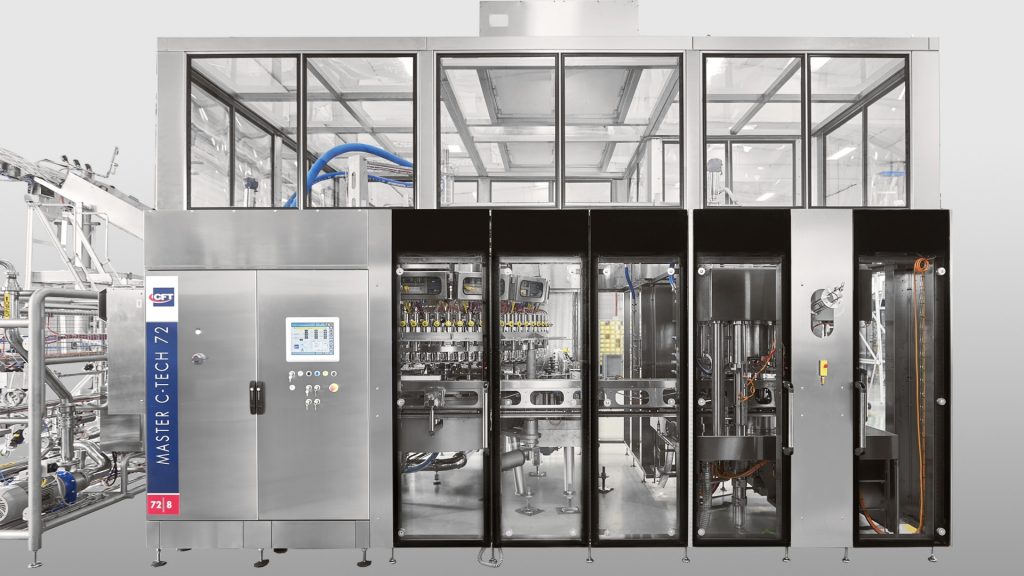
Level Filling Machines
Level filling technology ensures that each container is filled to the same height (the fill point), compensating for minor variations in container capacity.
The principle is simple: the liquid flows into the container until it reaches the preset height, at which point the valve automatically closes. This guarantees a consistent fill level, regardless of the actual container volume.
The main advantage of this liquid filling machine is visual uniformity. Many consumers associate product quality with its appearance, and a consistent fill level conveys a clean, premium image. For this reason, level filling is often used in the beverage industry and for products packaged in transparent containers such as glass or PET bottles.
This technology is suitable for both carbonated and still beverages and can operate at very high production speeds. Level fillers can be configured for cold, ambient, or hot filling, with varying levels of automation. Their simple and robust design makes them reliable for long-term, continuous production with minimal maintenance.
However, since level filling doesn’t compensate for container capacity variations, the actual product volume can slightly differ between units. This is generally acceptable for beverages but may not be ideal for products where the exact quantity must be guaranteed for regulatory or cost reasons.
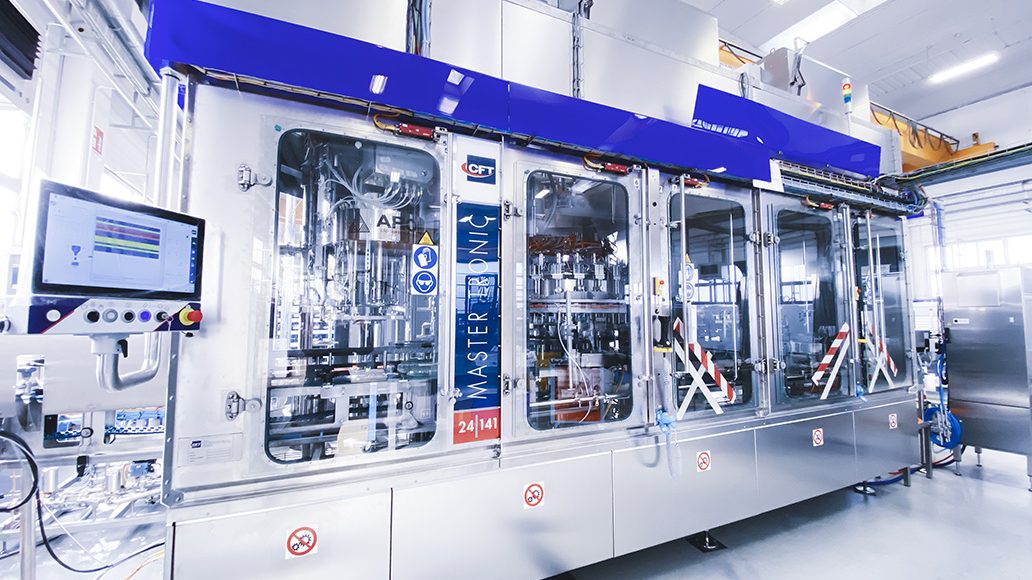
Load Cell (Weight) Filling Machines
Weight filling, also known as net weight filling, doses the product by measuring its actual mass inside each container. The system uses high-precision electronic load cells that monitor weight continuously during filling: once the setpoint is reached, the valve closes automatically to ensure consistent, accurate dosing.
This technology is especially useful for high-value liquids or viscous products, where even small overfills can cause significant cost increases. It’s also ideal for liquids with variable density—such as oils, syrups, or sauces—since it’s unaffected by temperature or viscosity changes that can distort volumetric measurements.
Another major advantage is versatility: weight-based filling machines can easily adapt to containers of different shapes and sizes without complex adjustments. They also ensure full compliance with weight regulations across different markets, reducing the risk of non-conformities or legal disputes related to under- or overfilling.
Operationally, these liquid filling machines offer a dual benefit: they reduce waste, improving sustainability, and ensure top accuracy, though usually at slightly lower speeds, since each cycle requires a precise weighing phase.
Modern systems often include digital monitoring and quality control tools, making the process even more reliable and traceable. For these reasons, load cell filling machines are ideal when product value protection and accuracy take priority over maximum production speed.
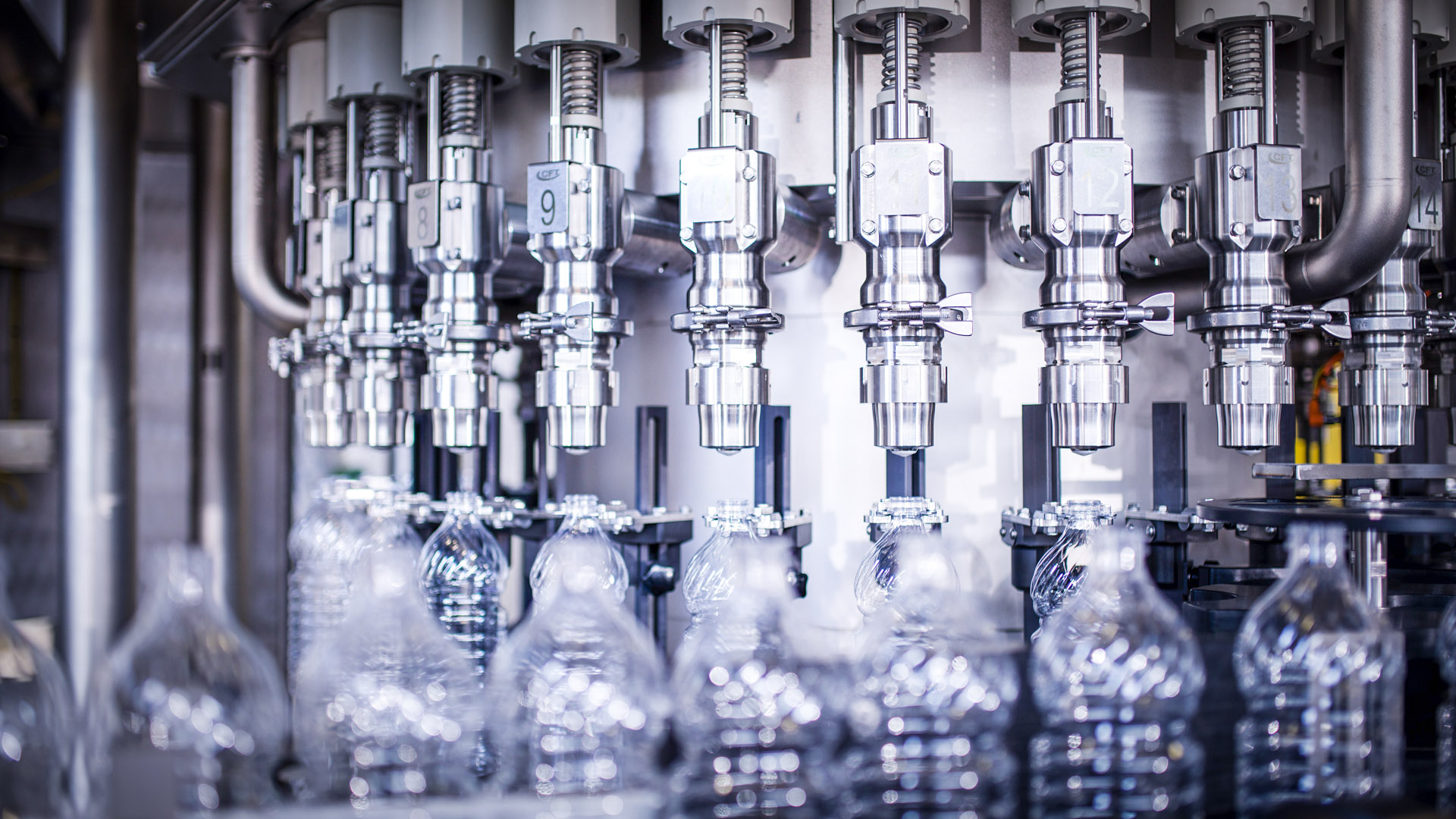
Volumetric (Piston) Filling Machines
Volumetric filling technology doses a predefined product volume into each container, regardless of its shape or size. This is typically achieved through a piston-cylinder system, which draws a fixed volume of product into its chamber and then transfers it into the container, ensuring consistent dosing.
These piston filling machines are known for their exceptional versatility. They can handle a wide range of viscosities—from thin liquids to dense pastes or products with solid particles. They are widely used as food filling machines for sauces, jams, spreads, dairy products, and ready meals.
Volumetric filling ensures both accuracy and good operating speed. Its biggest advantage is its ability to handle complex products—such as chunky or high-viscosity foods—that can be challenging for other filling technologies.
It also allows for quick and simple format changes, making it perfect for short production runs or varied packaging. Overall, piston filling machines offer a balanced combination of speed, flexibility, and reliability, and can be easily integrated into hygienic production lines with automatic cleaning systems.
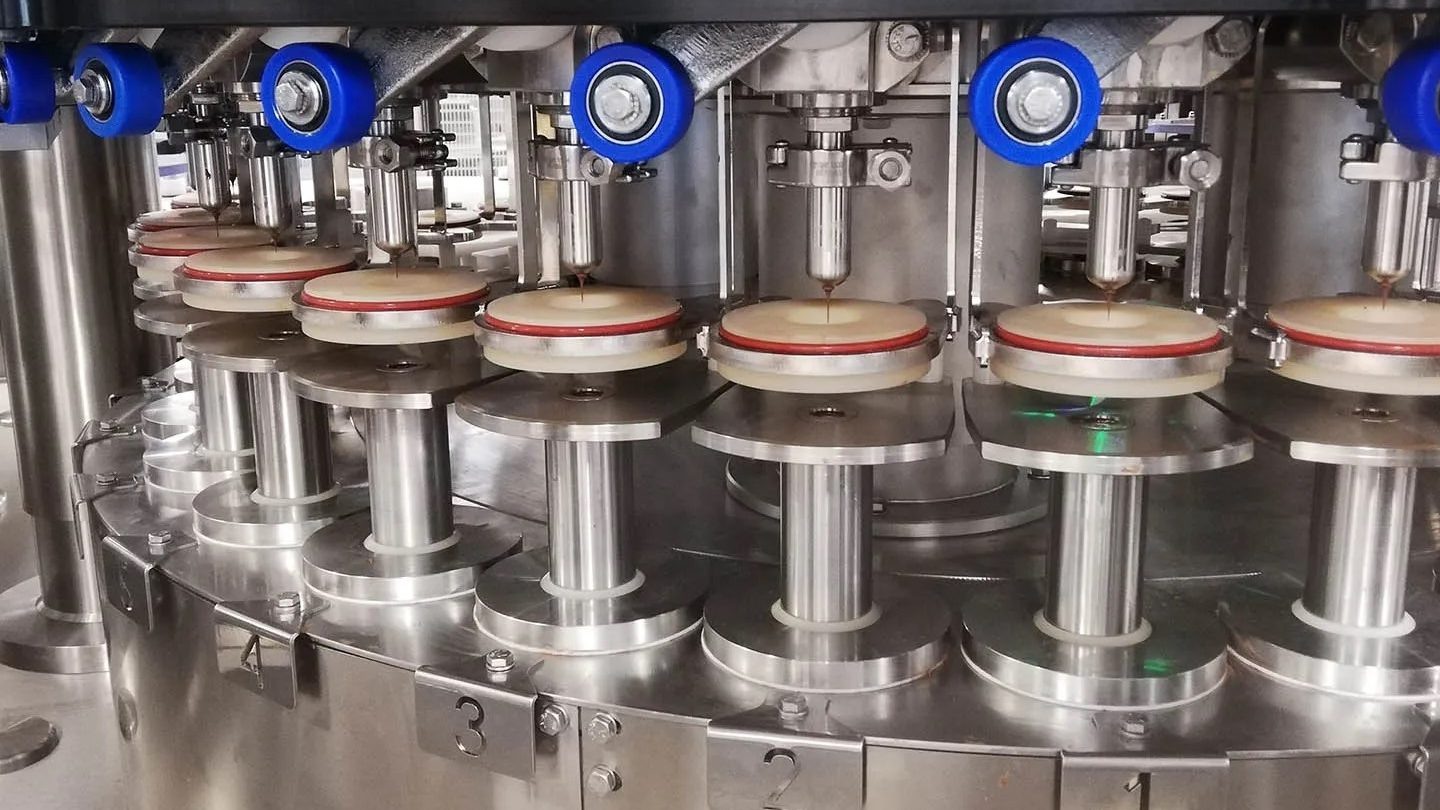
Types of Filling Machines
Linear and Rotary Filling Machines
Linear filling machines move containers along a straight path, with nozzles opening and closing in sequence. They are ideal for small to medium-scale production, where flexibility and easy cleaning are essential.
They can handle a wide variety of products—from food liquids to detergents—and are known for their high accessibility and compatibility with different container types (bottles, jars, cans, flasks).
Rotary filling machines, on the other hand, operate continuously: containers are placed on a rotating carousel, allowing high-speed, uninterrupted filling.
They are the preferred choice for high-volume beverage lines, where precision and productivity must coexist. Rotary fillers can be configured with different dosing systems—level, flowmeter, volumetric, or isobaric.
Automatic and Semi-Automatic Filling Machines
Automatic filling machines are the most advanced and widely used in modern industrial lines. They integrate electronic control systems, precision sensors, and smart software, ensuring accurate dosing and high productivity. They can be configured as either linear or rotary, depending on production volumes and product type.
At the other end of the spectrum are semi-automatic filling machines, a good compromise for medium-scale production, combining some automated functions with operator supervision, and manual filling machines, suitable for small batches or lab testing.
The choice depends on the desired level of automation, production volumes, and required accuracy—balancing efficiency, flexibility, and product quality.
Isobaric Filling Machines
Isobaric filling machines are designed for carbonated beverages, where it’s essential to maintain constant pressure between the tank and the container during filling. This prevents CO₂ loss and preserves product quality while ensuring precision and fill uniformity.
Depending on the measurement system used, isobaric fillers can operate either by level or by flowmeter: in the first case, filling stops at a predetermined height; in the second, the product volume is measured by mass or electromagnetic flow sensors.